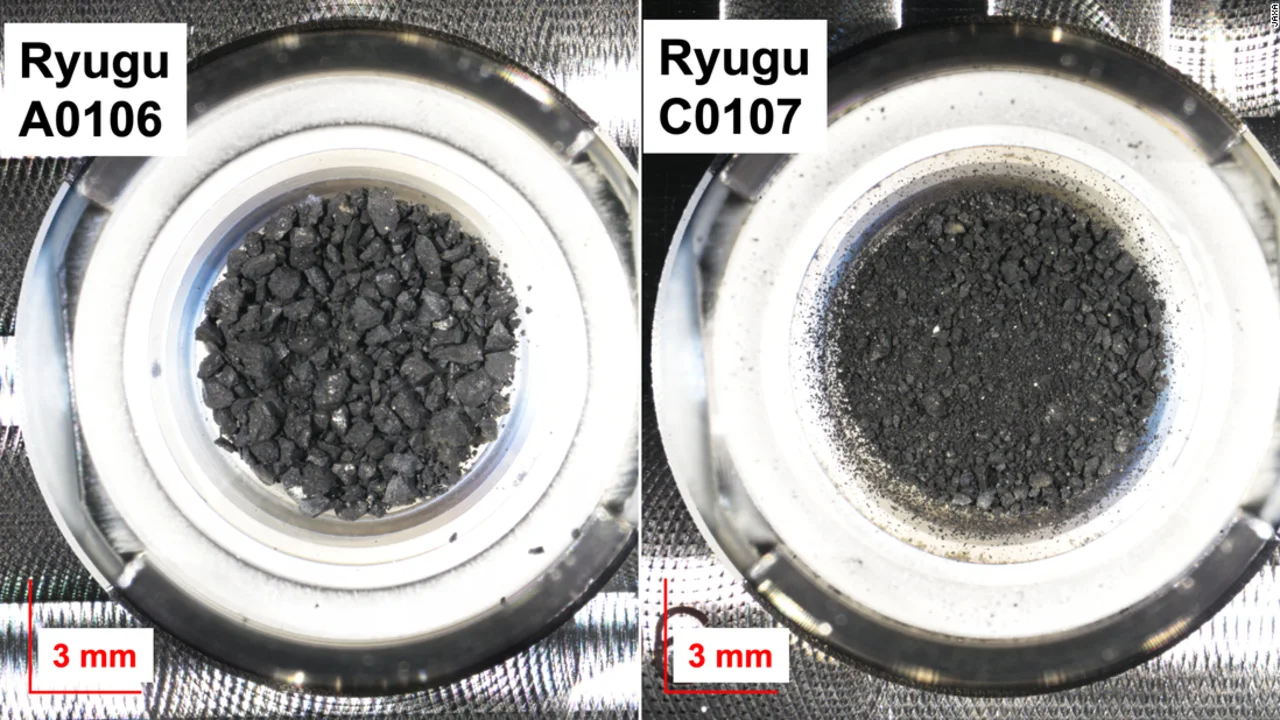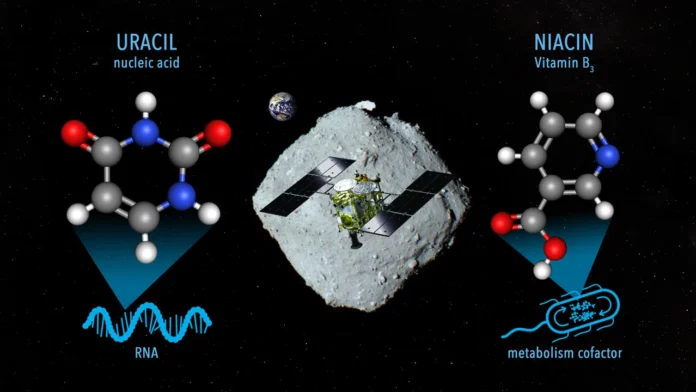Unraveling the Mysteries of Life in the Cosmos
Hayabusa2’s Remarkable Discoveries
In an extraordinary twist, Japan’s Hayabusa2 mission uncovered organic molecules within samples retrieved from the near-Earth asteroid Ryugu. Delving into these samples, scientists identified uracil—a component of RNA—and vitamin B3 (niacin), an essential metabolism cofactor in living organisms.
Diving deeper, uracil, a nitrogen-based compound, ranks among the quintet of nucleobases that constitute DNA and RNA—indispensable genetic information carriers for life as we know it.

Nature Communications: A Glimpse into Ryugu’s Composition
The journal Nature Communications recently published a study showcasing these findings. Ryugu, a diamond-shaped, carbon-rich asteroid, spans approximately 3,000 feet (1 kilometer) in width. The Hayabusa2 mission made history by returning the first-ever subsurface asteroid sample to our home planet.
Journeying to Ryugu, the mission gathered one surface sample in February 2019, followed by a sample from a 33-foot (10-meter) wide impact crater—created by the spacecraft itself—in July 2019. The samples arrived on Earth in December 2020.
The Implications of Identifying Life’s Building Blocks in Space
In earlier analyses, researchers discovered amino acids and other molecules in the samples. Interestingly, uracil and niacin have been detected in meteorites that fell to Earth. Hayabusa2’s samples, collected directly from Ryugu and securely sealed in capsules, dismiss the likelihood of Earthly contamination.
To unearth these molecules, the research team soaked Ryugu’s particles in hot water, subsequently scrutinizing the results through various observational techniques. Their analysis revealed the presence of uracil, niacin, and other nitrogen-rich organic compounds, in addition to amino acids, amines, and carboxylic acids.
This groundbreaking discovery bolsters the hypothesis that life’s building blocks originated in space, journeying to Earth via meteorites billions of years ago. These molecules likely formed via photochemical reactions in outer space ice, prior to the solar system’s genesis.
Peering into the Future: Delving Deeper into Asteroid Composition
Curiously, the two samples displayed differing molecular concentrations, possibly due to exposure to the cosmos. Ryugu might have been part of a more extensive celestial entity that shattered following collisions with other objects in space.
Lead study author Yasuhiro Oba posits that biologically significant molecules in asteroids and meteorites have played a crucial role in Earth’s prebiotic evolution. Similar life-building blocks could exist on other planets within our solar system.
With an eye to the future, researchers aspire to ascertain the prevalence of these molecules in asteroids. Another asteroid sample, courtesy of Bennu, is anticipated to land on Earth in September, collected by NASA’s OSIRIS-REx spacecraft. Comparing these samples will supply more data to reinforce current theories about the origins of nucleobases on primordial Earth.








